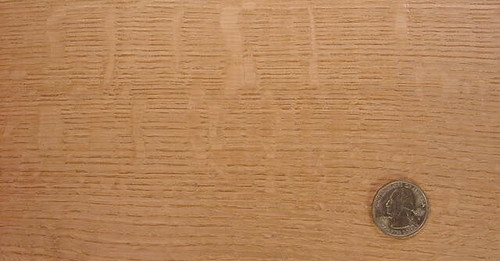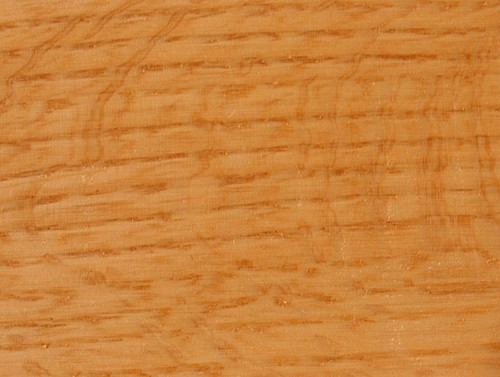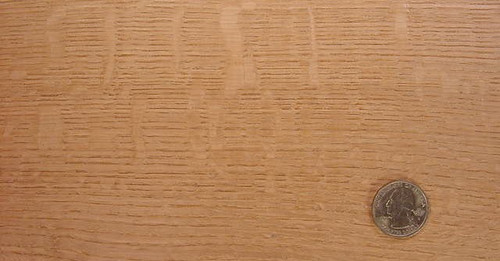Product Description
LUMBER SURFACED ON 4 SIDES TO SIZES SHOWN + or - 1/4 Common Name(s): White OakScientific Name: Quercus alba Distribution: Eastern United States
Tree Size: 65-85 ft (20-25 m) tall, 3-4 ft (1-1.2 m) trunk diameter
Average Dried Weight: 47 lbs/ft3 (755 kg/m3)
Specific Gravity (Basic, 12% MC): .60, .75
Janka Hardness: 1,350 lbf (5,990 N)
Modulus of Rupture: 14,830 lbf/in2 (102.3 MPa)
Elastic Modulus: 1,762,000 lbf/in2 (12.15 GPa)
Crushing Strength: 7,370 lbf/in2 (50.8 MPa)
Shrinkage:Radial: 5.6%, Tangential: 10.5%, Volumetric: 16.3%, T/R Ratio: 1.9
Color/Appearance: Heartwood is a light to medium brown, commonly with an olive cast. Nearly white to light brown sapwood is not always sharply demarcated from the heartwood. Quartersawn sections display prominent ray fleck patterns. Conversely, Red Oak tends to be slightly redder, but is by no means a reliable method of determining the type of oak.
Grain/Texture: Grain is straight, with a coarse, uneven texture. Endgrain: Ring-porous; 2-4 rows of large, exclusively solitary earlywood pores, numerous small to very small latewood pores in radial arrangement; tyloses abundant; growth rings distinct; rays large and visible without lens; apotracheal parenchyma diffuse-in-aggregates (short lines between rays).
Rot Resistance: Rated as very durable; frequently used in boatbuilding and tight cooperage applications.
Workability: Produces good results with hand and machine tools. Has moderately high shrinkage values, resulting in mediocre dimensional stability, especially in flatsawn boards. Can react with iron (particularly when wet) and cause staining and discoloration. Responds well to steam-bending. Glues, stains, and finishes well.
Odor: Has a tell-tale smell that is common to most oaks. Most find it appealing.
Allergies/Toxicity: Although severe reactions are quite uncommon, oak has been reported as a sensitizer. Usually most common reactions simply include eye and skin irritation, as well as asthma-like symptoms. See the articles Wood Allergies and Toxicity and Wood Dust Safety for more information.
Pricing/Availability: Abundant availability in a good range of widths and thicknesses, both as flatsawn and quartersawn lumber. Usually slightly more expensive than Red Oak, prices are moderate for a domestic hardwood, though thicker planks or quartersawn boards are slightly more expensive.
Sustainability: This wood species is not listed in the CITES Appendices or on the IUCN Red List of Threatened Species. Common Uses: Cabinetry, furniture, interior trim, flooring, boatbuilding, barrels, and veneer.
Comments: White Oak is the state tree of Connecticut, Illinois, and Maryland. Connecticut’s state quarter was minted with a picture and inscription of a famous White Oak tree, The Charter Oak.
White Oak is strong, beautiful, rot-resistant, easy-to-work, and economical, representing an exceptional value to woodworkers. It’s no wonder that the wood is so widely used in cabinet and furniture making.
Product Videos
Custom Field
Product Reviews
1 Review Hide Reviews Show Reviews
-
Quartersawn Oak
Refinishing an old bookcase and the quartersawn oak is what I needed.








